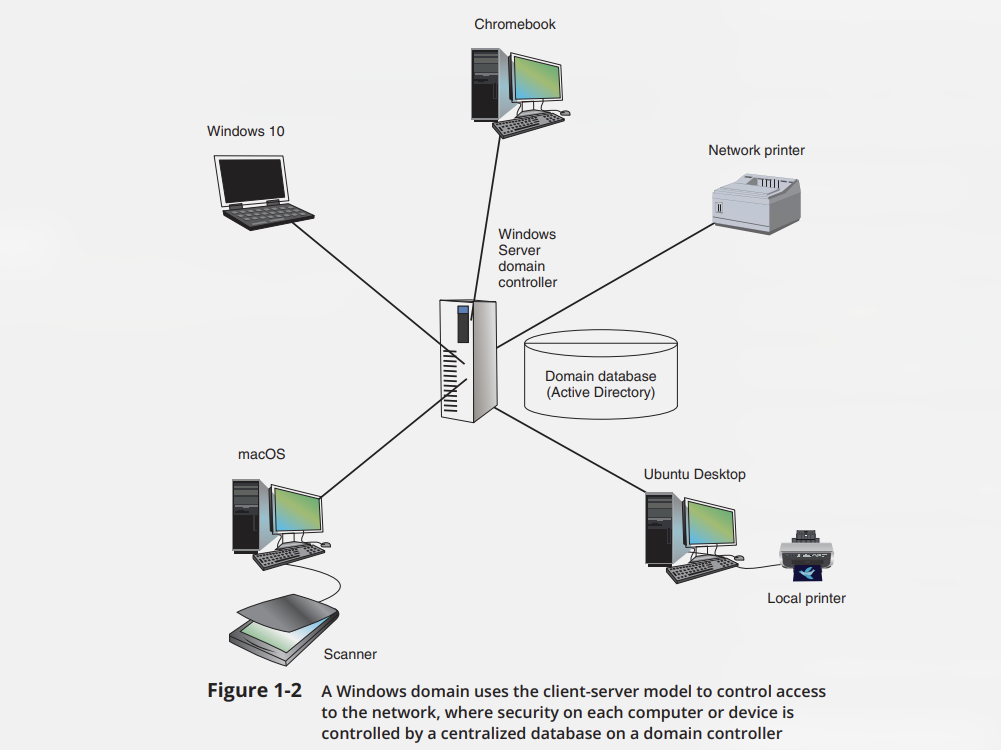Client Server Model
The client server model as the name suggests is a central network where every data is sent and fetched through a server instead. Every server has a similar NOS installed so they can talk to each other efficiently.
Server
This takes into account a windows server to explain everything about servers. When a windows server controls access to a group of computers this logical group of computers is called a windows domain. The centralized directory which contains the user account information for all the computers is called a AD ( Active Directory ). Each user on the network has their own domain-level account assigned by the network administrator and kept in Active Directory This account is local which is specifically set to that domain or a microsoft account or that domain account which links local domain resources with the microsoft resources. A user may Sign In on the network using their logon resources and get access to the active directory. This is managed by AD DS ( Active Directory Domain Services )
Client
Now this was all servers. Lets have a look on clients that are served.
The computer that makes the request is called a client. Clients have local data storage they can store their own data and application data.
Clients cannot access each others data directly and it has to go through the server.

Responsibilities of the server client NOS
- Managing data and other resources for clients.
- Ensuring authority and that only authorized users have access to their accounts.
- Read Write permissions.
- Restricting when and where a user can access their files from.
- Dictating or generalizing a set rules that the clients use to communicate often called protocols
- Supplying the application data and files to clients.
Properties of Servers
A server has these properties due to the following reasons:
- More Memory and Processing clockspeed and power
- Since they handle more logical clients connections
- Uses RAID ( Redundant Array of Independent disks ) so that if one hard drive fails another takes responsibility
Advantages & Disadvantages of CS Model
There are various advantages of Client Server Model Over P2P model.
- User accounts and passwords to the network are assigned in one place.
- Access to multiple shared resources can be easily granted to one user.
- Problems can only occur at one location so fixing also needed at only one location
- Client Server Models are more scalable than P2P since theres only one Data Base of Lists.
Miscellaneous Questionnaire
REMEMBER THIS…
- Compare physical topology with logical topology.
- Describe a client-server network model in contrast with a peer-to-peer network model.
- Explain the role of AD (Active Directory) in a Windows domain.
SELF-CHECK
-
Which of the following is part of a network’s physical topology?
- a. A network server’s operating system
- b. A printer plugged into a nearby desktop computer
- c. Password for the wireless network
- d. File permission settings on a desktop computer
-
Which of the following is an advantage of P2P file sharing?
- a. Scalable
- b. Centrally controlled
- c. Secure
- d. Inexpensive
-
What group must clients join to access network resources in a client-server network?
-
a. Workgroup
-
b. Domain
-
c. Peer group
-
d. RAID
-
References
Information
- date: 2024.10.01
- time: 16:21